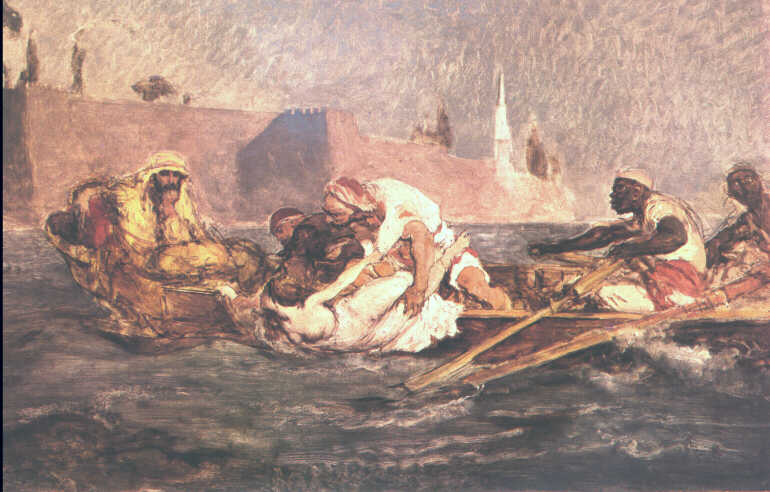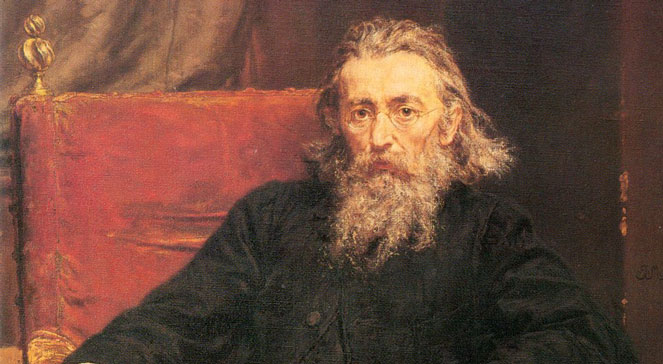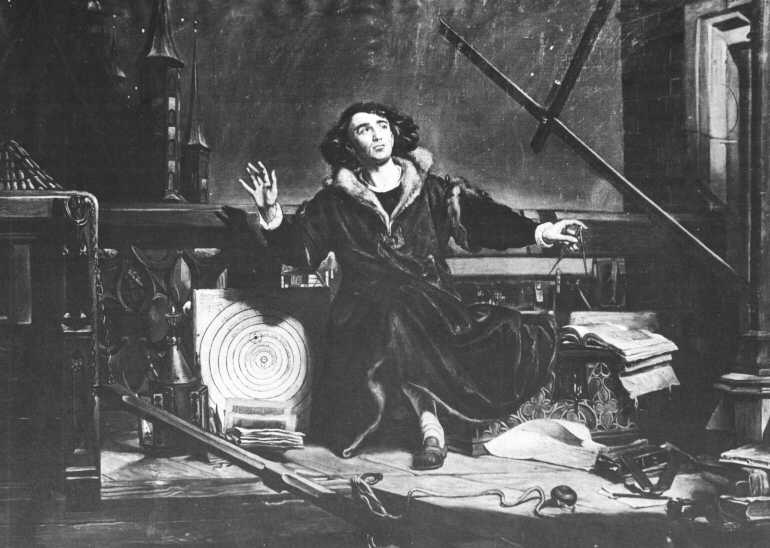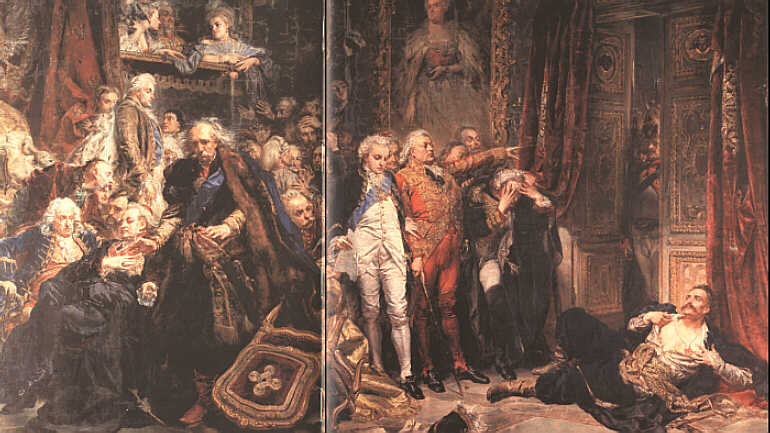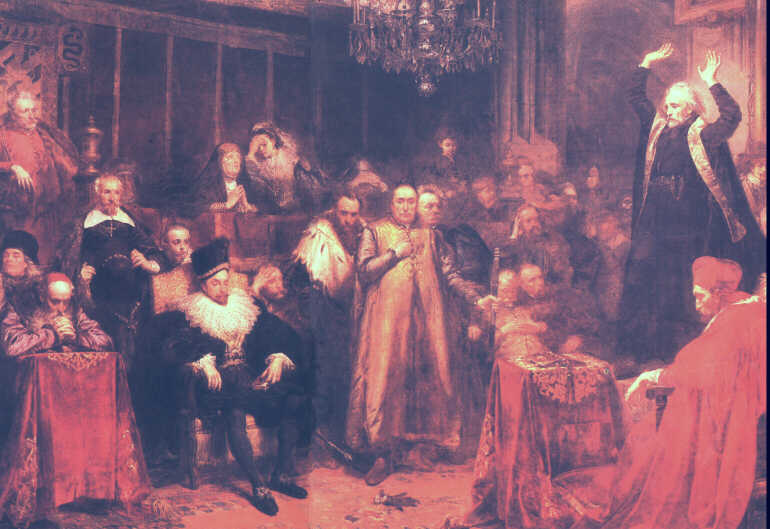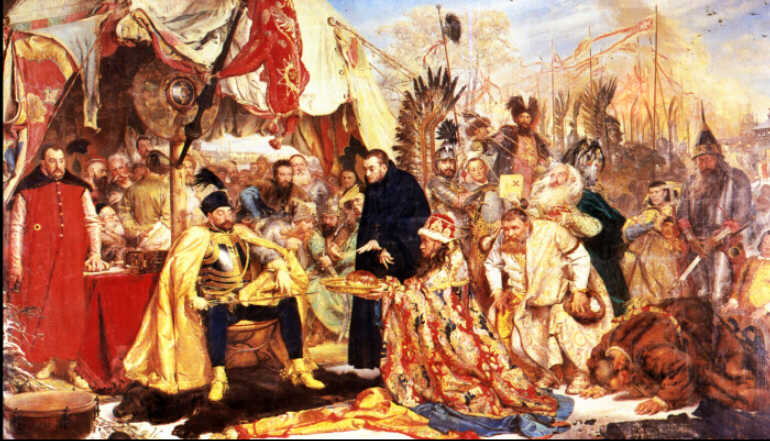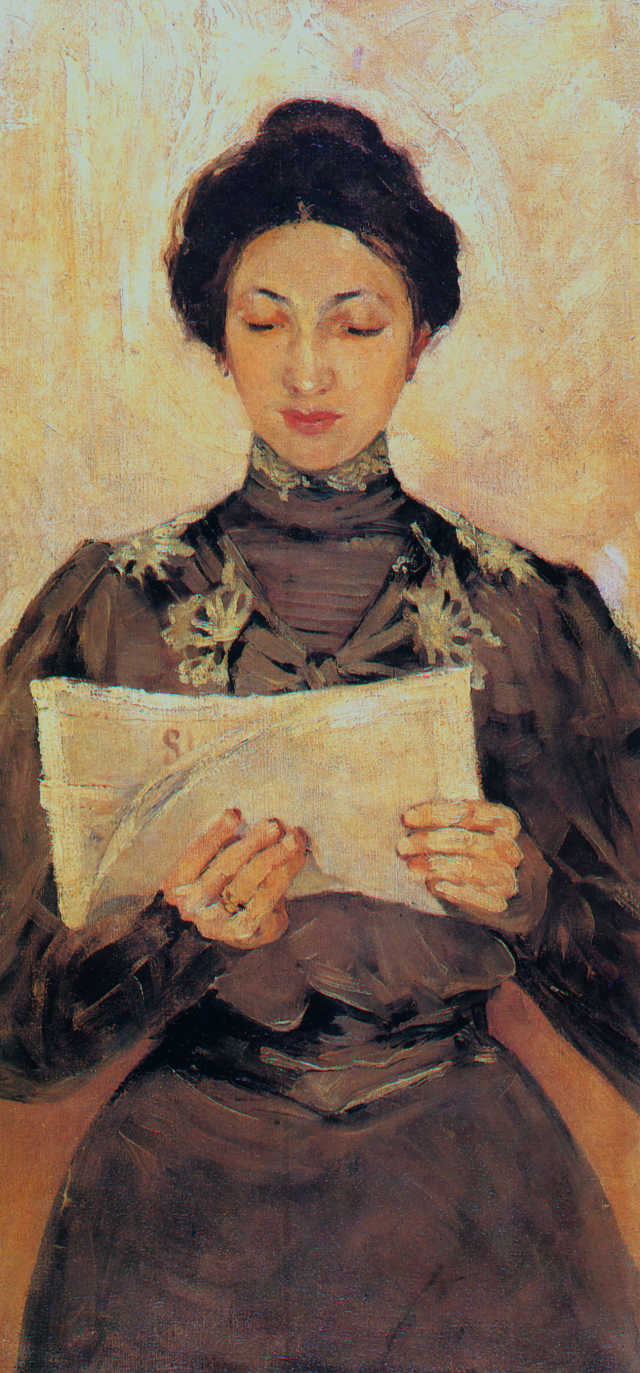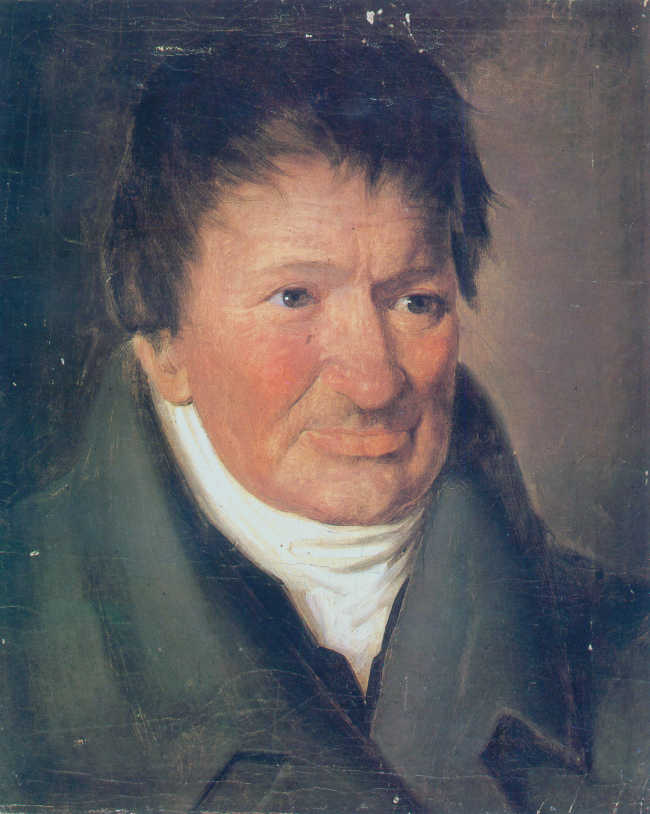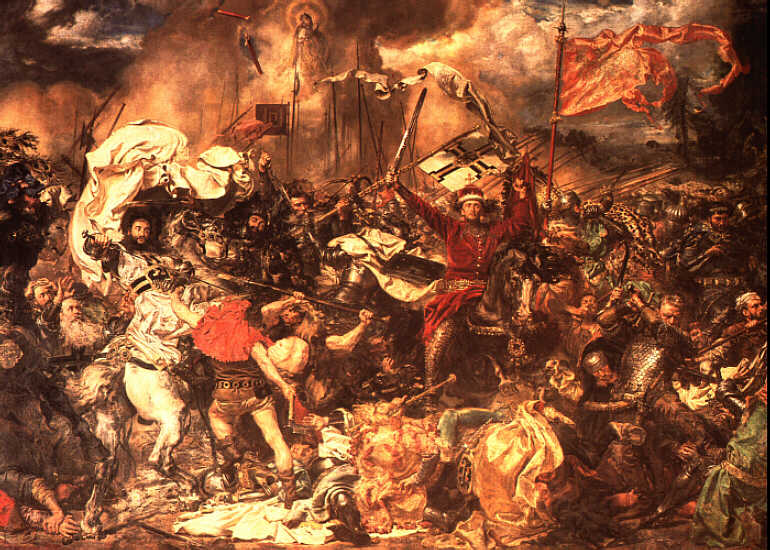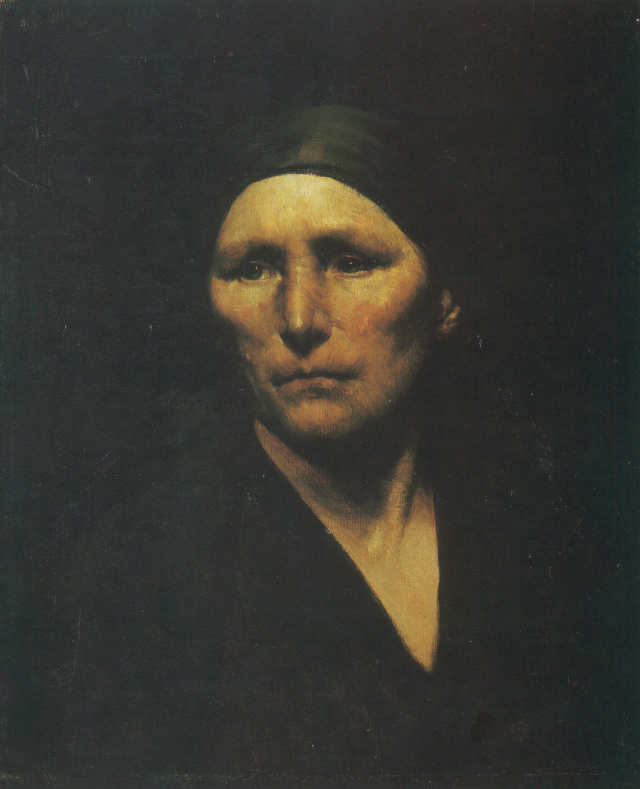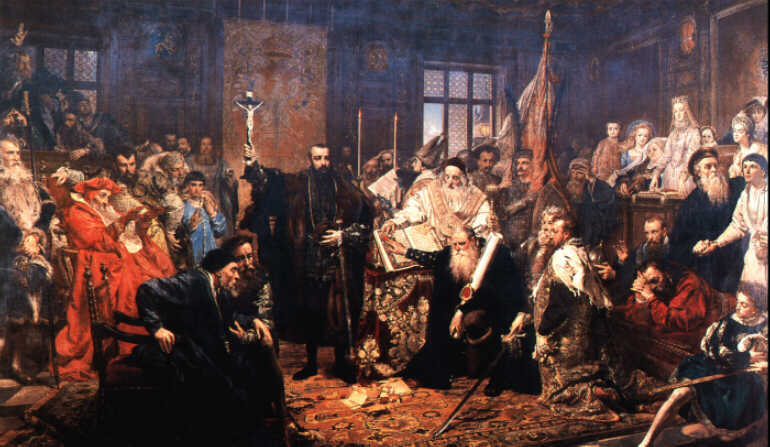Jan Matejko studied painting at the School of Fine Arts in Krakow headed by Stattler and Łuszczkiewicz; he stayed briefly in Munich with Herman Anschutz and in Vienna with Christian Ruben. For a year 1860 he lived in Krakow, where in the year 1873 took over the management of the School of Fine Arts. He got to know Paris briefly, Constantinople and Italy, which perhaps most strongly influenced his mature work.
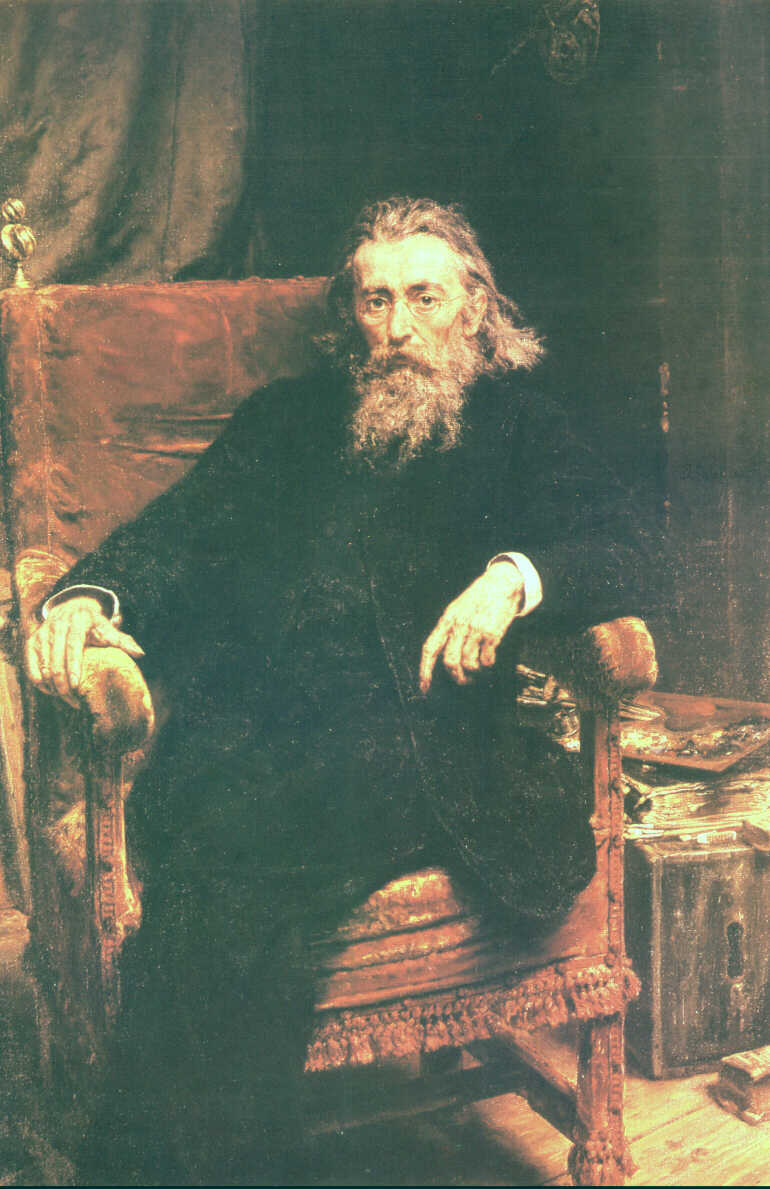
Until recently, in terms of ideological significance, the artist's work was divided into two main periods: short-lived, early, until the time of execution in a year 1869 image Union of Lublin, and mature, for more than twenty years, ended only with the death of the Master. In the first period, the thesis painter was developing “critical historicism”; in accordance with the facts, he blamed the partitions of Poland on the nobility, especially the magnates. In the second period, he showed the historical merits of kings, knights and noble leaders. He did not forget then about the role of the bourgeoisie, about the fate of the peasant and his participation in the fight for independence. He pictured The history of civilization in Poland, emphasized the importance of the University of Krakow and Polish humanism. He revived the Jagiellonian days of glory in Poland, succumbing to a certain extent to the prompts of the Krakow canned food.
However, the main driving force behind his art was the intention to warm hearts with the vision of an independent Poland, in which Sienkiewicz reminded him.
Beginning with the year 1862, in which he appeared Stanczyk Every few years, historical pictures as large as a wall were born, interspersed with thousands of sketches, lots of smaller format compositions and portraits. In turn, they appeared:Complaint's sermon, 1869
Regent, 1866
Union of Lublin, 1869
Batory near Pskov, 1872
Copernicus, 1873
Battle of Varna, 1873
Ivan the Terrible in the Kremlin, 1874
Battle of Grunwald, 1879
Prussian Homage, 1882
Sobieski near Vienna, 1883
Wernyhora, 1884
The Virgin of Orleans, 1886
Kościuszko near Racławice, 1888
Constitution 3 May, 1891
Vows of Jan Kazimierz, 1893
In year 1890 made a series of drawings entitled. Polish kings, a w 1891 polychrome at St. Mary's Church in Krakow.
Władysław Łokietek (1260-1333) crowned king of Poland in the year 1320, striving to reunite the broken state, he waged war with the Teutonic Knights, first of all for the recovery of those lost in the year 1308 Pomerania. Despite the victorious battle of Płowce in the year 1331, these struggles did not bring the expected results.
Władysław Łokietek breaking the treaty with the Teutonic Knights in Brześć Kujawski
National Museum in Warsaw;
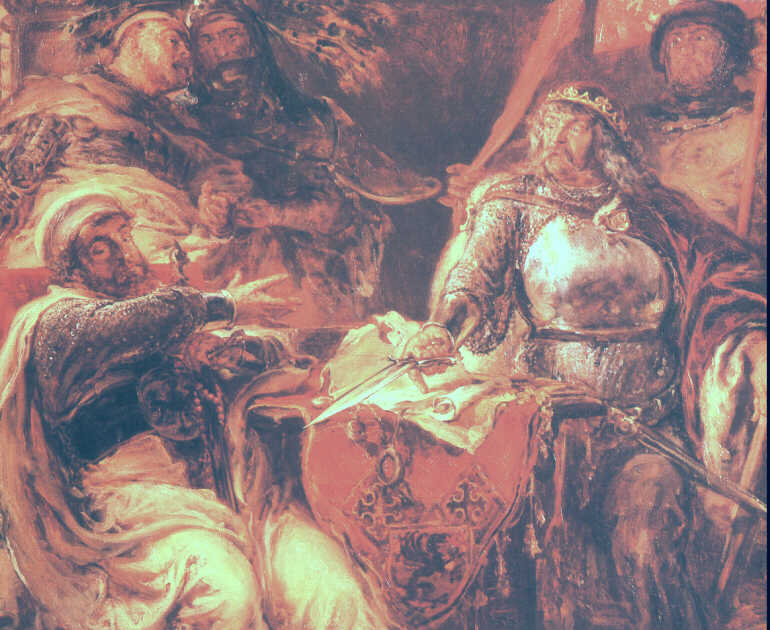
The Sigismund Bell, commonly called in Krakow “Zygmunt”, cast in a year 1520 in Krakow, in the bell foundry of the Nuremberg Hans Beham, and in honor of Sigismund the Old, one of the Wawel towers was hung, to this day, he announces important and joyful events to the city and beats also in times of sorrow and suffering. It is a symbol of the bell, one of the most important national symbols.
Suspension of the Sigismund's bell on the cathedral tower in the year 1521 in Cracow
oil, plate, 94 x 189 cm;
National Museum in Warsaw
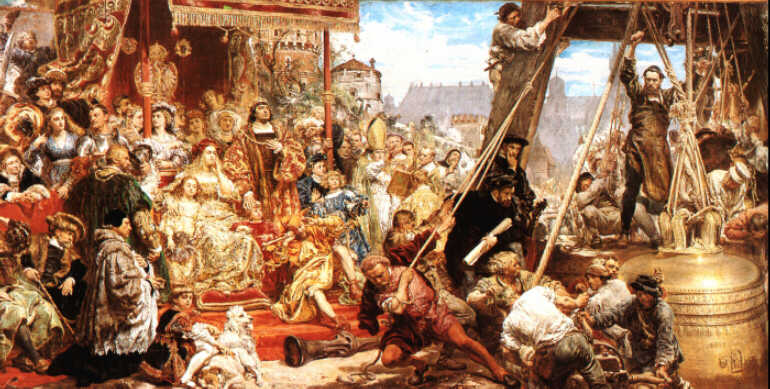
Perched on the border of two groups: court and working class, Stańczyk, a zygmunt clown – as always spokesperson Matejko himself – he parodies with his twisted arrangement of working poses, but at the same time as if he was afraid of them, as if he saw in the tense faces some threat to the crumbling structures hidden behind still splendid facades.
oil, mahogany board, 149 x 209 cm;
Lviv Picture Gallery;
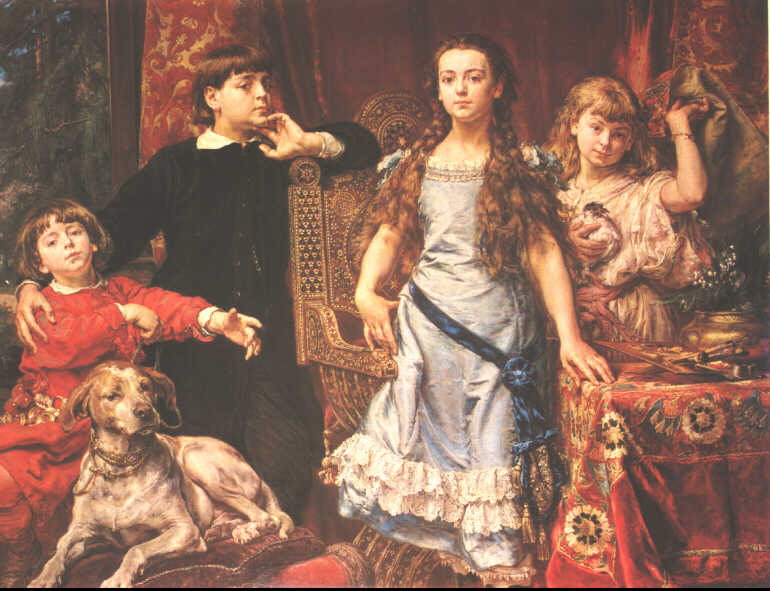
oil, plate, 99 x 64 cm;
National Museum in Warsaw;
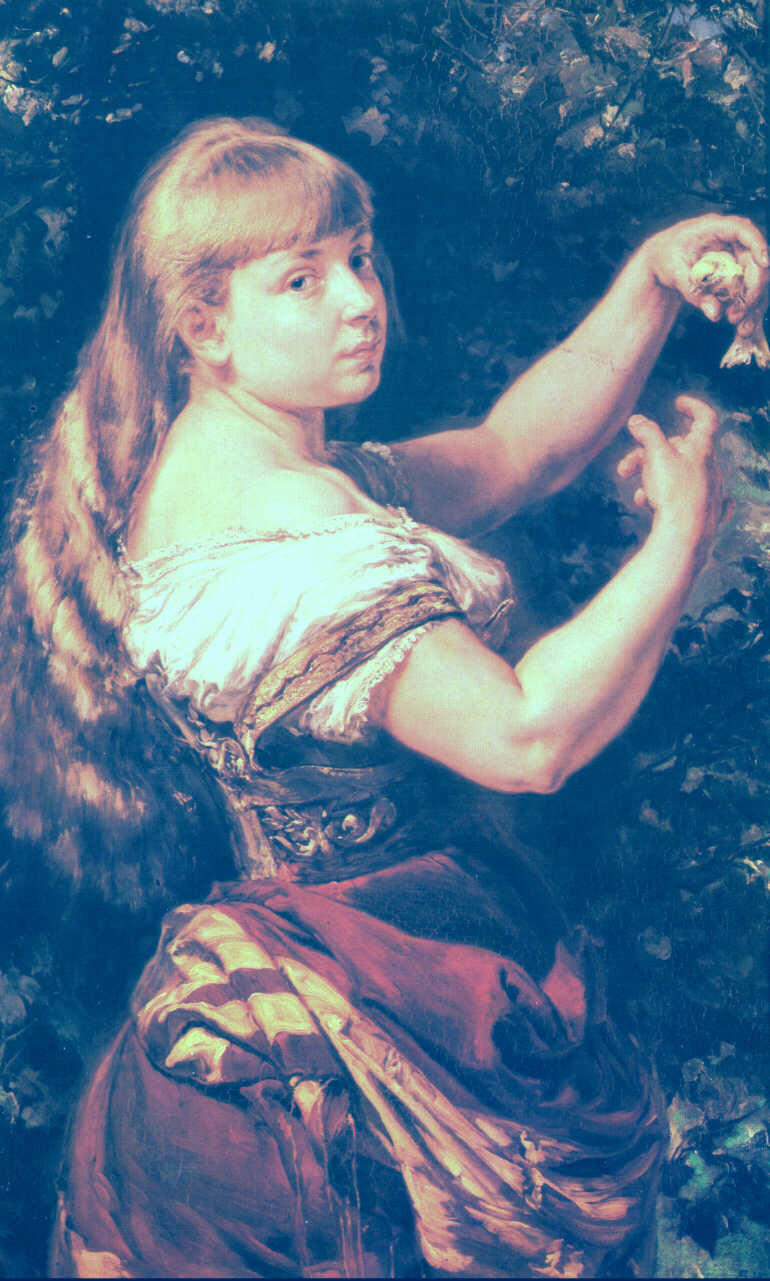
oil, canvas, 36,5 x 61 cm;
Lviv Picture Gallery;

oil, mahogany board, 88 x 134 cm;
National Museum in Wrocław;
